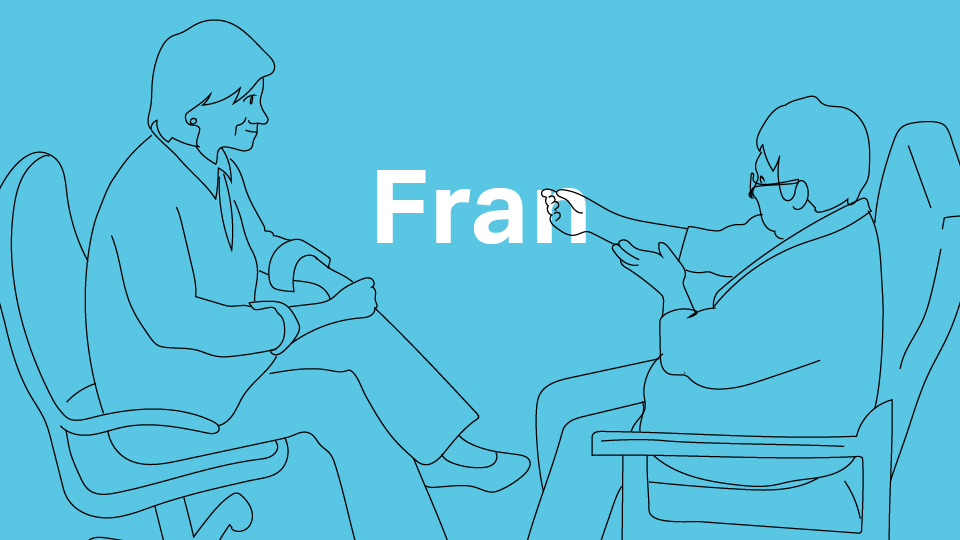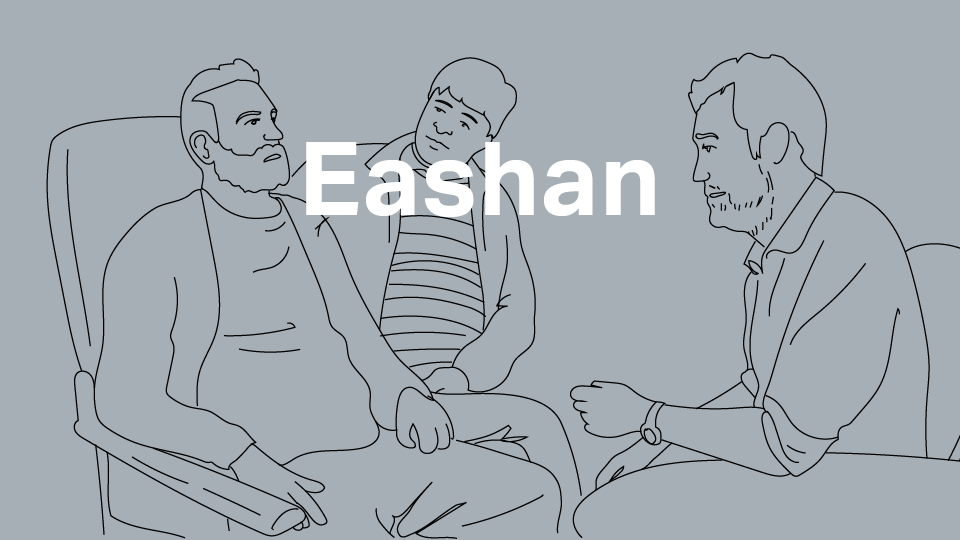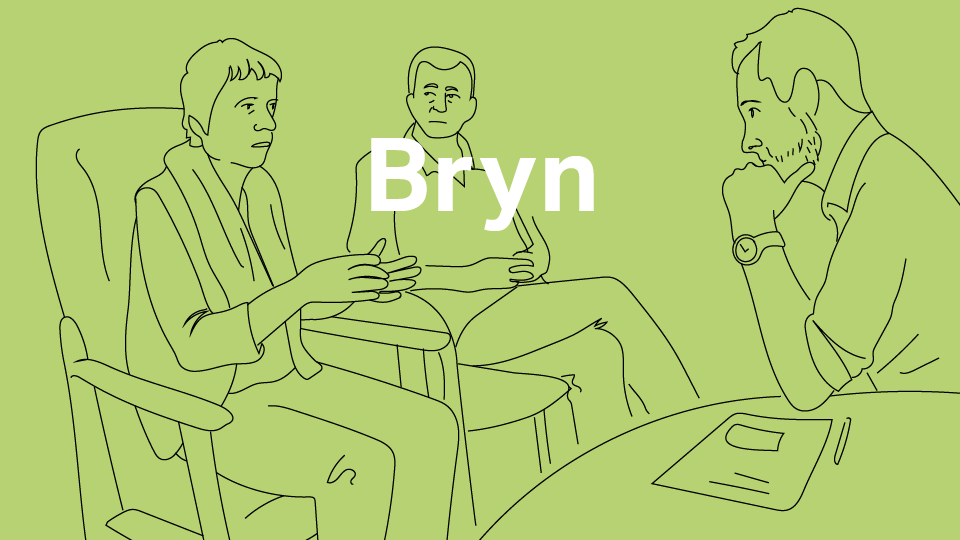Understanding a patient’s pain: introducing new communication training resources to enhance pain assessment

In order to assess and understand a patient’s pain, healthcare practitioners have to rely almost entirely on what that patient can express about their pain. Professional recommendations for assessing pain provide guidance on what healthcare practitioners should enquire about, including pain location, intensity, what makes it better and what makes it worse. Guidance also suggests using structured tools such as pain scales to assess pain severity.
“In Real Talk’s video-recordings of conversations… pain assessment is actually far from straight forward.”
Whilst obtaining the above information from patients may appear to be a straightforward matter, Real Talk’s video-recordings of conversations between healthcare practitioners, patients, and companions in a large UK hospice reveal that pain assessment is actually far from straightforward. The complexity lies not so much in what is assessed, but rather in how best to do so.
Learning how to help patients provide the most detailed and accurate information possible about their experiences is a much more difficult task. This is because we are all used to noticing the topics we talk about, but in our day-to-day lives, we pay scant attention to exactly how we talk about them.
Fortunately, communication scientists like me can provide information about the ‘how’ of communication by offering a window into real-life examples of healthcare conversations. Via analysis of video-recorded medical encounters, communication scientists can highlight some of the all-important details regarding how experienced healthcare practitioners talk with their patients about matters such as pain. These scientific insights can then be used to pass on expertise to others and thus enhance communication practice.
In this blog, I introduce some new training resources, recently added to the Real Talk communication training initiative, that reveal the details of how healthcare practitioners talk with their patients about pain. They are based on research I carried out on video-recorded conversations between people who are in pain and their experienced healthcare practitioners. The recorded conversations took place in a palliative care setting, but much of what I found is directly relevant to conversations about pain in other settings.
Carefully designing questions and handling misunderstandings in real-life pain assessment
When I began to examine the video recordings, I noticed that practitioners asked patients about their pain and reacted to patients’ answers in different ways over the course of each consultation. Practitioners begin with fairly general requests for information such as, “So tell me a bit about the pain.” This enables the patient to take the lead in the aspect of their pain that they present. More specific questions such as, “How long does it last?” are then asked later. Practitioners acknowledge what patients say in different ways, including asking questions such as “Is it?” which prompts the patient to confirm that the doctor has understood correctly. Alternatively, the practitioner can acknowledge that they have heard the patient’s answer, for instance by saying “Right.”
I also noticed that, in certain places, practitioners repeat patients’ answers back to them. They appear to do this specifically when a new pain concern emerges in conversation, or when the practitioner’s understanding of the pain is corrected by the patient. So, I began to work on answering a puzzle: why do practitioners sometimes repeat patients’ answers, and what happens when they do? Repeats are used to do a wide variety of things, like showing disagreement or lack of understanding. The repeats I found were voiced in a way that enabled healthcare practitioners to show that they had heard and registered what had been said, and gave patients opportunity to say more without pressuring them to do so. By repeating the patient’s answer in this particular way, a moment is created for the patient to confirm or to elaborate upon the new pain description, but in a way that avoids putting the patient on the spot if they have nothing further to add. You can read more here in the ‘Nutshell’ series:
How repeating a patient’s answer gives patients a no-pressure opportunity to tell you more
I also looked at episodes in which there were misunderstandings and tricky moments during conversations about patients’ pain. For example, it was noticeable that when a patient finds it difficult to answer a question, the practitioner and patient laugh together, and this works to soften the awkwardness and provide more time for the patient to work out how to respond. One misunderstanding occurred when a practitioner realised that the patient had misunderstood ‘10’ on a pain scale to mean ‘no pain’ (as opposed to ‘the worst pain imaginable’). It was clear that the practitioner held back from correcting this misunderstanding until the patient had finished describing her pain. Such difficulties were handled sensitively, and the practitioner carefully worked to avoid leaving the patient feeling disempowered.
“when a patient finds it difficult to answer the question, the practitioner and patient laugh together… softening the awkwardness”
As human communicators, we all have a rich toolkit for responding uniquely and sensitively to unpredictable topics and mishaps that come our way as a conversation unfolds. Communication scientists can shine some light on this toolkit. Video clips and accompanying materials examining healthcare practitioners undertaking pain assessment in real-life circumstances provide powerful resources for teaching and learning in the field of healthcare communication.
Spotlight on new pain communication training resources added to Real Talk
The two new pain modules in Real Talk, ‘Asking questions about pain’ and ‘Using pain scales’, allow communication trainers and practitioners to use transcripts and evidence-based learning materials, and allow registered trainers to access video clips from real-life healthcare interactions.
The module ‘Asking questions about pain’ provides a case study in which the practitioner prompts the patient, Fran, to talk generally about her pain, and then follows up with specific questions.

In this video clip, viewers can see how the practitioner responds to Fran’s answers. The learning points provided can support discussion and learning about the ways in which we design our questions, and about when to use particular questions or prompts during pain assessment.
The module ‘Using pain scales’ comprises two cases. In the first case, viewers can observe the practitioner asking the patient, Eashan, to rate his pain from 0-10. The patient answers by providing more than just a single number, and in doing so he provides the practitioner with a fuller picture of his pain experience.

In the second case, the patient, Bryn, and the practitioner have different understandings of whether ‘10’ indicates high or low pain, and they work to resolve this misunderstanding, with the practitioner handling it with particular care, as I described above.

These clips are valuable for understanding and teaching some of the complexities of assessing pain in real-life clinical practice, for example, how to support patients to respond to pain scales as fully as they can, and how to sensitively handle misunderstandings in ways that protect the clinical relationship and provide for more comprehensive descriptions of the patient’s pain experience.
How to use the Real Talk training materials
Real Talk’s innovative training resources are available for free to eligible UK-based health and social care professionals who deliver training to health and social care staff and trainees. For more details on eligibility read our FAQs.
As a registered trainer, you may add the training resources into your face-to-face communication training events, whether these are aimed at novices or highly experienced practitioners. Registered trainers may use the video clips in face-to-face or online, live streamed (but not recorded) training events and sessions – guidance available, including PowerPoint slides, in the login section for registered users.
Each case includes video clips, background details of the patient, an overview of the consultation, transcripts of what is said in the recordings, and accessible summaries of relevant scientific research. Each video clip is also accompanied by evidence-based learning points that you may use to stimulate discussion. Trainers may choose to play video clips with or without subtitles.
Real Talk is a flexible resource that can be used with groups of varying sizes and in a variety of session formats to suit your needs. The healthcare practitioners featured in the video clips are all doctors, but Real Talk has been used effectively across pre- and post-professional training with nurses, allied health professionals, paramedics, senior care home teams, chaplains, and clinicians in the prison service.





